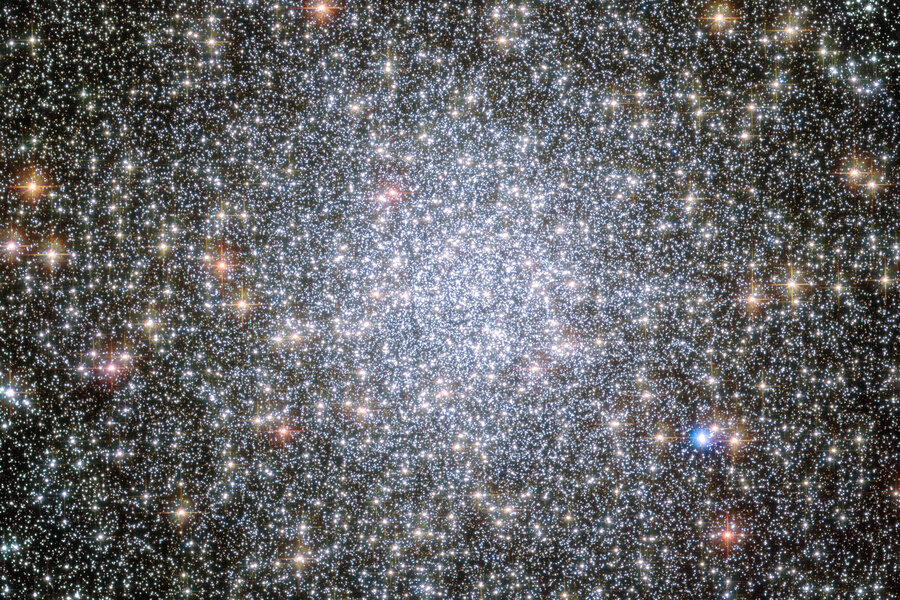Looking for E.T.? Try dense star fields.
Looking for extraterrestrial life? Try looking in an unexpected place: dense fields of stars largely devoid of planets, called globular clusters.
"A globular cluster might be the first place in which intelligent life is identified in our galaxy," Rosanne Di Stefano of the Harvard-Smithsonian Center for Astrophysics, lead author of a study on the subject, said in a statement.
Globular clusters are massive groupings of hundreds of thousands, or even millions, of stars, packed tightly in a relatively small region about 100 light-years across.
The Milky Way itself is home to about 150 globular clusters about 10 billion years old, nearly as old as the universe itself.
A rare, rocky exoplanet amid such a dense star field would be an ideal place for intelligent life to flourish, say Dr. Di Stefano and study co-author Alak Ray of the Tata Institute of Fundamental Research in Mumbai, India.
Traditionally, scientists haven't targeted their searches in these interstellar regions, largely because it's hard to find planets in globular clusters.
And stars in these clusters tend to be very metal-poor, which, some have argued, makes it difficult for planets to form.
“The two things that are bad for [planet-finding] are faint stars and really crowded stars,” Steve Howell, who works on NASA’s planet-finding Kepler mission, told National Geographic. “It’s just a hard problem.”
But traditional understanding of the subject is changing with the discovery of small, rocky exoplanets found orbiting stars containing a fraction of the metal found in our sun – stars, in fact, with metal contents as low as those found in globular clusters.
Any planets found in globular clusters would be a pleasant home for extraterrestrial life, say the study's authors. Planets could survive for billions of years amid a population of old, small, tranquil stars. That's enough time for advanced life to emerge and develop.
“In a way, it would be very serene to live in a globular cluster,” Di Stefano told National Geographic.
What's more, the relatively close distances between stars in a globular cluster would make interstellar communication and travel fairly easy.
"We call it the 'globular cluster opportunity,'" Di Stefano said. "Sending a broadcast between the stars wouldn't take any longer than a letter from the US to Europe in the 18th century."






